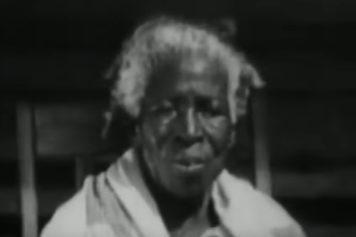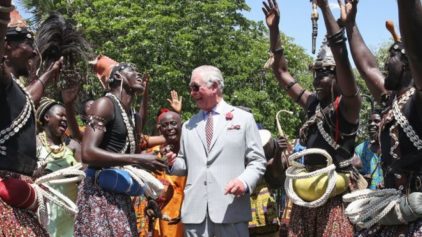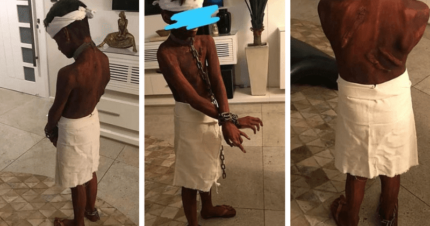
Columbia University.
New York’s Columbia University is the latest to come forward and publicly address its ties to slavery, joining a number of America’s most esteemed learning institutions in acknowledging their roles in the sale and enslavement of Black bodies.
In a recently published report, Columbia history professor Eric Foner detailed how the school, formerly known as King’s College, profited from the Trans-Atlantic slave trade. A large chunk of the money accrued from the transport and sale of enslaved Africans ultimately helped fund the university’s humble beginnings.
“From the outset, slavery was intertwined with the life of the college,” Foner said. “Of the 10 men who served as presidents of King’s and Columbia between 1754 and the end of the Civil War, at least half owned slaves at one point in their lives. So did the first four treasurers.”
It is no surprise that slavery played a significant role in the establishment of King’s College, as New York, a British colony in the early 1700s, had become a popular hub for trading enslaved bodies in the New World, according to the report. There was no social stigma attached to the purchase of enslaved peoples, and it was customary for major merchants to import entire shipments of Africans in bondage. In fact, it was these merchants who provided significant funding to found what would later become Columbia University.
But the preliminary report also highlighted an aspect of U.S. slavery that’s often overlooked: Enslaved Africans were traded in the North just as they were in the South. While plantation slavery drove the economy of the South, the profits from the Trans-Atlantic slave trade also helped fund the establishment of America’s most prestigious learning institutions in the Northeast, including Harvard, Yale and Brown University.
Just last year, Georgetown University revealed that it auctioned off a whopping 272 enslaved workers in 1838 in order to keep the institution afloat during hard financial times. The sale earned the school nearly $3.3 million in today’s dollars to satisfy its debts. The school then announced in September that it would extend preferential legacy admission privileges to the descendants of the enslaved Africans as a way to atone for its past transgression(s).
“The most appropriate ways for us to redress the participation of our predecessors in the institution of slavery is to address the manifestations of the legacy of slavery in our time,” Georgetown University President John J. DeGioia said in a statement.
Other historic universities also moved to publicly disclose their history with slavery, especially as demands for colleges to be more transparent about their role in the enslavement of Black bodies intensified across campuses nationwide. For instance, Harvard issued a public apology for its failure to address its racist past and recently moved to retire the university seal, which was tied to a notorious slave owner named Isaac Royall. Clemson University broke ground on commemorative markers to honor the lives of its former enslaved workers, while Yale moved to drop the title of “master of residential colleges” from one of its buildings.
“I think it’s critical universities do this,” Craig Steven Wilder, a Massachusetts Institute of Technology history professor specializing in American institutions, told ATTN:. “We are institutions that are founded to produce knowledge and pursue truth and we can’t be cowardly when those truths are uncomfortable for us.”
Now, Columbia University is trying to follow suit.
In an interview with The Atlantic, Foner explained how the project to uncover the institution’s ties to slavery came about. He said the idea for the report was ultimately sparked by Wilder’s book “Ebony and Ivy: Race, Slavery, and the Troubled History of America’s Universities,” which details the relationship between America’s higher-ed institutions and the enslavement of African-Americans.
“We knew Yale, Harvard and Brown had done something. Princeton is doing something [to address slavery], Foner said. “It seemed like the time had come.”
The history professor went on to point out that King’s College wasn’t like Georgetown, which had a plantation and owned 200 some odd enslaved Africans. School leaders instead owned just a few enslaved workers, but profits made from the trade of said enslaved workers were still significant to the establishment of the college.
“There was an interlocking elite, big merchants, lawyers and so on,” Foner explained. “The Livingstons, the Delanceys, the Watts. All of them had some connection to slavery.”
“King’s College was rather small, but nonetheless, faculty had to be paid and the president, and so on,” he continued. “They didn’t have a campus, they just had a building that cost a lot. So, a lot of the fundraising went into that expense. The colony gave them some money, but they couldn’t live off of it, so the money was mostly from these donations from trustees.”
After the Revolutionary War (when King’s College changed its name to Columbia), slavery was gradually abolished in New York, creating a moderate anti-slavery sentiment. However, Foner said that although New Yorkers wanted to get rid of slavery, they also wanted to get rid of all the Black people and send them back to Africa.
The preliminary report concluded with the Civil War, when many Columbia students rallied for the Union cause. Moving forward, the report, compiled with the help of students in Foner’s research seminar, will continue to fill in the historical gaps all the way into the 20th century.
Foner said he’s not exactly sure of the response his report will garner but said that it’s a part of American history that needs to be acknowledged.
Slavery has “been really ignored in the official histories of Columbia,” he said. “We’re doing what universities are supposed to do, produce knowledge and disseminate it, uncovering a neglected piece of our history. It illuminates the history of not only the school, but of New York, too.”


